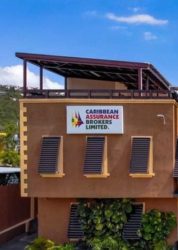The government of Jamaica enjoyed increased inflows into their coffers in January, bringing the total to $34.4 billion, $1.4 billion more than the $33.2 billion projected, this may augur well for Phillips’ 2015-16 as it could mean that the economy is throwing off revenues in line with forecast.
Notwithstanding the good news for January, Phillips budget has a $15 billion gap between the revenues and recurrent and non-debt capital expenditure to be filled, if the government is to have another year of balanced fiscal operations. The situation can get worse if Phillips aggressive take on GCT and PAYE inflows don’t materialize. These two areas seem likely to underperform forecast, while corporate taxes could do far better that projections.
The government is projecting to collect around 5.5 percent more in revenues than for the year ending in March on the assumption that the short fall in revenues to January will be maintained at those levels. The 2014-15 budget projected revenues at $428 billion but it should end around $420 billion when the numbers are all in. the next fiscal year projection is for revenues of $448 billion. The projection for tax revenues is an increase of 7.5 percent to reach $402 billion from around $374 billion.
PAYE is to make a big jump of 13 percent to get to $76 billion from around $67 billion, for the March 2015 fiscal year. But while the government is projecting a huge increase in PAYE there is slower growth for education of tax, projected at $21 billion, up from $19 billion or 10.5 percent. Under normal circumstances education taxes should grow faster than PAYE in this fiscal year. The threshold for Income tax has been increased and would therefore mean that the PAYE would be paid on a smaller sum than for Education tax. GCT is projected to jump by $17 billion to $139 billion, a high 14 percent increase. Surprisingly, Corporation taxes are projected to enjoy no increase. That is a big surprise with a large portion of cost input this year having fallen significantly and should help improve companies bottom-line. The other element is that those lower energy cost for fuel and electricity will boost consumer spending somewhat and that will feed back into corporate profits, as such businesses should benefit in two ways.
Banking on a sharp increase in GCT and PAYE are inconsistent with an economy that projected to grow at no more than 2 percent in real terms and nominally, possibly 5-6 percent and an assumption that corporate taxes will be fall is inconsistent with the impact of the falling prices of electricity, gasoline and interest rates on profits.
Projected payments on recurrent expenditure is for $433 billion and capital expenditure of $29 billion and leaves a shortfall of $15 billion.
GOJ has $15 billion hole in budget
March 5, 2015 by IC Insider.com
Filed Under: Economy, Feature Stories
About IC Insider.com





